
Fairey Battle I

The Fairey Battle had the distinction of becoming the first operational aircraft to enter service with a Merlin engine, beating the Hawker Hurricane's service debut by a few months. The Fairey Battle also recorded the first RAF aerial victory of the Second World War and the first two RAF aircrew to receive a Victoria Cross in WWII (posthumously) were flying a Battle. The Battle was built to meet Air Ministry specification P.27/32 issued in April of 1933. The Fairey design initially envisioned the use of one of several high horse power engines then in development however only one of these made it to the production stage and that was the Rolls-Royce Merlin. While undoubtedly a fine power plant the engine had no where near the power to give the three man bomber anything more than minimal performance. The Battle's first flight took place on March 10, 1936 after a delay due to problems with the Merlin engine. While there were no serious criticisms of the aircraft, its performance was disappointing. The RAF had little interest in the design at this point in time but political pressure was such that there was a great demand to equip newly formed squadrons and a large number of the Battles were chosen for this task. The first production Battle flew on April 14, 1937. It was built to Specification P.23/35 which incorporated a number of changes including a three man crew, equipment changes, a variable pitch propeller, external exhaust stubs and a revised canopy. After suffer devastating losses in the early stages of the war the Battle was relegated to training and target towing duties. The last operational use of the Battle was by 98 Squadron which was deployed to Reykjavik, Iceland as part of Coastal Command to fly reconnaissance and anti-submarine patrols and convoy escorts until July 1941. The Battle, through tragic loss of so many brave men in the initial operations of WWII, proved that the bomber would not always get through and in do so it set in motion bomber design and development that include heavy defensive armament and crew protection. The Battle marks the end of what could be considered the age of innocence in bomber design.
The Kit
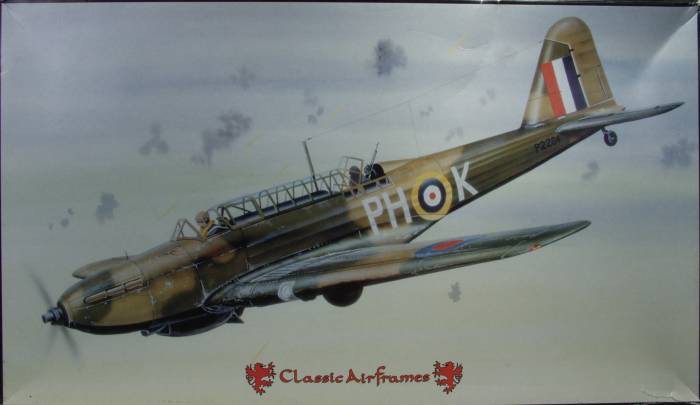
The Classic Airframes kit comes in a two part top open box with nice artwork on the top. Inside the box is a bag containing two sprues of gray plastic, a small bag containing resin parts and two vacuformed canopys. The parts feature recessed panel lines and and fastener detail and most show a light amount of flash. The main gear struts on my kit were more heavily flashed. For the most part the surface finish is smooth and the panel lines are fine and consistent. Many of the lines are so fine that they may disappear under multiple coats of paint. A few of the smaller pieces have a rough texture about them but should be easy to take care of if desired. The wheels have nice tread and hub detail but the tires are not weighted. The fabric detail is nicely done and not over done as so often is seen. The demarcation lines for the control surfaces, which are all fixed, seems a bit light to me but that's easier to fix than the alternative. The gear wells are boxed in and the inside top of the wing has some structure detail molded in. Typical of short run kits there are no alignment pins on the parts. By my count there are 51 parts molded in gray. See photos below.
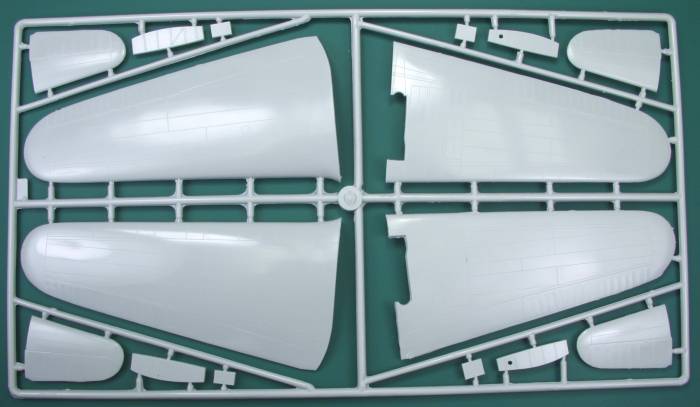
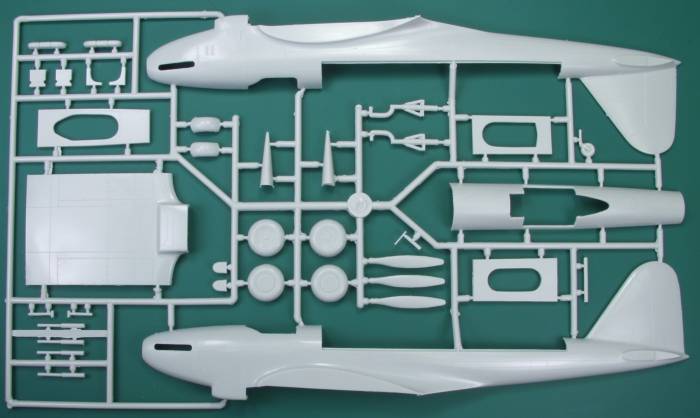
The canopy is vacuformed and you get a spare with the kit. They are not as clear as some of the after market vacuforms but should look OK with a coat of Future. The framework is crisply molded so masking shouldn't be hard, just time consuming. See photo below.
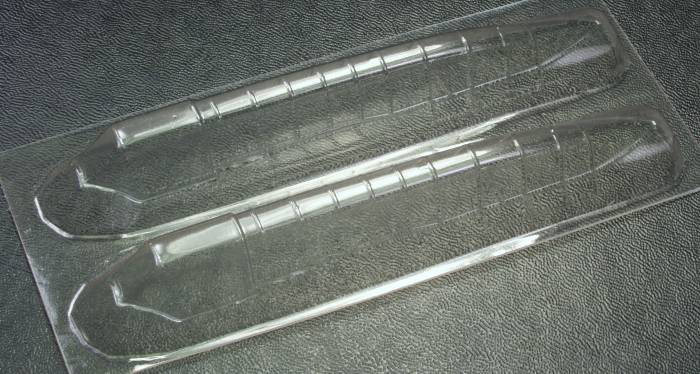
Also included are lenses for the landing lights and you get two sets of them as well, quality is about the same as the canopys. The wings do not have a cut out for these or the cast resin landing lights that are provided so some extra work is required if you want to use them. See photo below
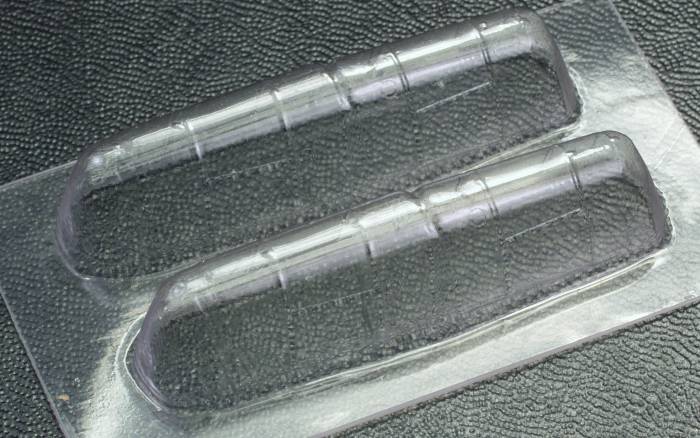
The Resin parts are molded in a tan colored resin and include side walls for both the pilot and gunners positions with structural detail and nice deeply molded equipment detail. There are also floors for both positions, instrument panel, radio, gun, the aforementioned landing lights, pilot and gunners seats, control sticks, two different propeller hubs and other detail items. The parts are all crisply molded and my kit had no pin holes or short shots that I could find. There are a total of 28 resin parts, for a kit total of 83 parts for the kit. See photo below
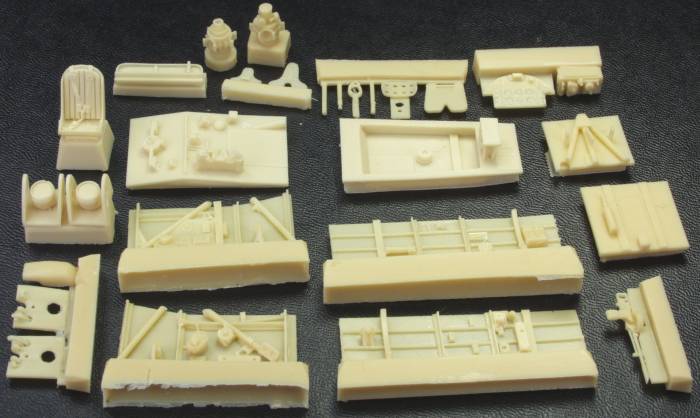
After Market Goodies
I lucked out when I bought my kit as it was an eBay purchase and came with some after market items that might otherwise have been hard to find. One of the accuracy issues with the kit is that the nose was molded too narrow. One of the aftermarket pieces was a resin replacement nose by Aeroclub which will correct the problem. It's nicely cast with fine recessed panel lines but the cut point on the fuselage is not a natural panel line so blending it in could be a chore. It came loose and I don't have a part number for it nor due I know if it is still available. See photo below.
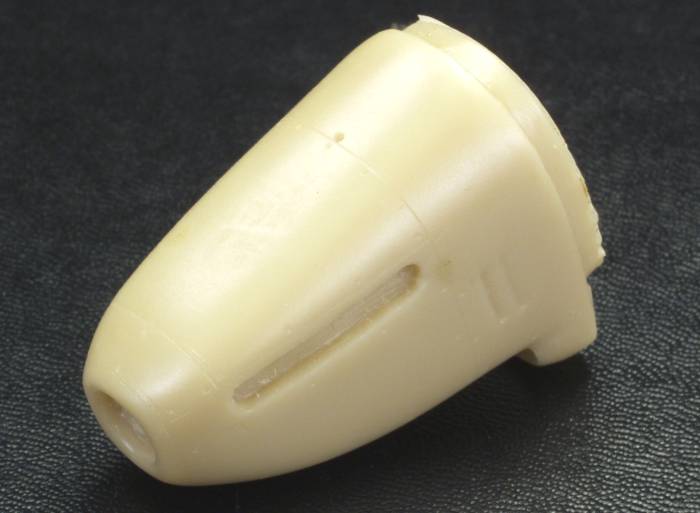
Also included in the kit was a cast metal propeller set, also by Aeroclub [P427]. The blades are ever so slightly wider in cord than the kit supplied parts and will require some clean up. The cast hub is not as nicely done as the resin parts supplied in the kit. At this point I haven't decided whether to use the blades or not.
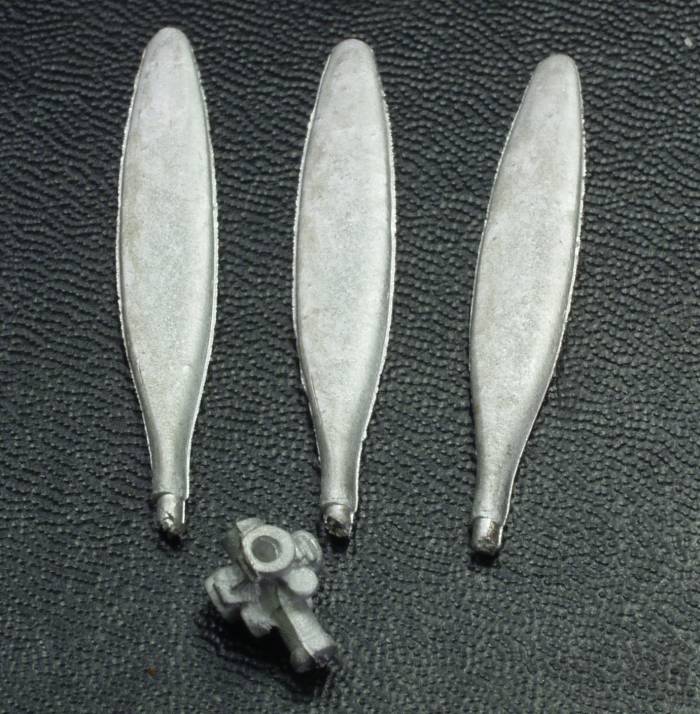
Also included are cast metal jack screws, Aeroclub [V194], these replicate the rather unusual look gear retraction mechanism which hangs out when the gear is down. The kit came with two sets but only one is need as far as I cant tell. As you can see in the photograph they have a bit of flash to be cleaned up. None of these three items came with any sort of instruction sheet so you are on your own to study photos and determine how to install them. See photo below.
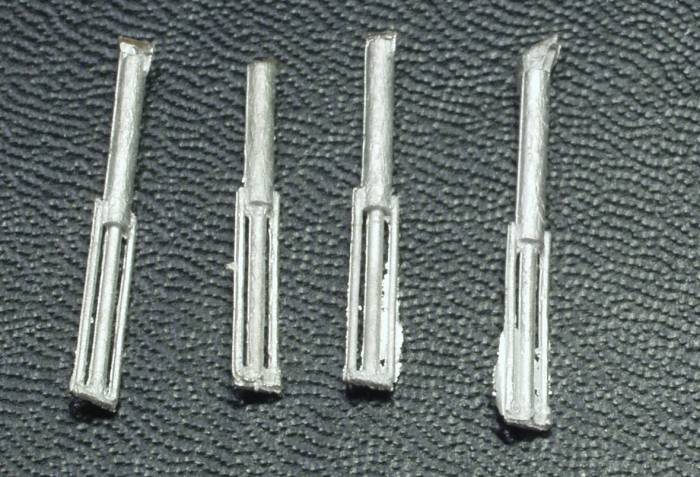
The kit supplied decals include markings for three aircraft, one for the aircraft flow by the crew receiving the VC, one for the 301 Polish squadron and one for the Royal Hellenic Air Force. The sheet is printed by Microscale and is thin, in register and opaque with a good representation of the red in the British markings. See photo below.
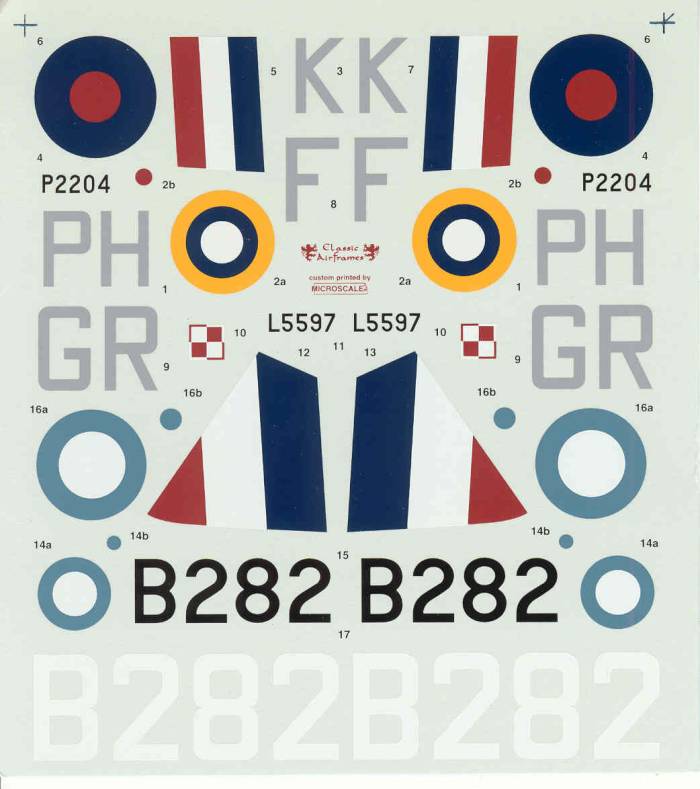
My kit also came with a set of after market decals from Aeroscale which includes markings for and additional six aircraft. These are also thin, opaque and in register and very nicely done if you are looking for something beyond what the kit supplies. See photo below.
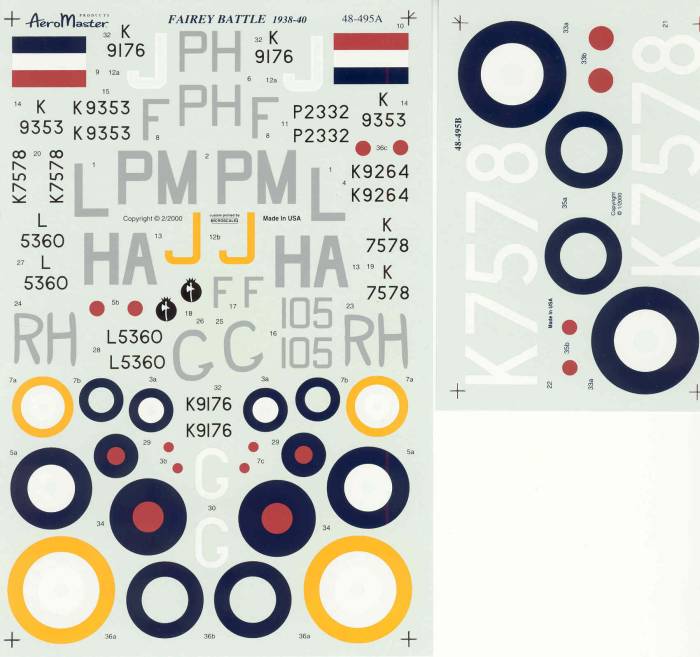
The instructions are printed on a legal size page folded in half with a half sheet as an insert providing 6 pages. The first page includes history and specifications along with the usual warning that the kit is intended for experienced modelers. The second page has an icon chart and basic color chart with FS numbers where applicable and a parts map. The balance of the pages are assembly steps in 10 panels. Also included in the kit is an letter sized page printed in color on one side with painting and lettering information for the two British marked aircraft and a half sheet printed in black and white with the same for the Royal Hellenic version.
Conclusions
This is a typical Classic Airframes kit and all the limited run kit warnings apply. Other reviews of the kit are mostly favorable with only minor fit issues to be encountered and it's certainly not likely that the aircraft will see the light of day from any of the main stream kit makers. Anyone with a few limited run kits or other Classic Airframes kits under their belt should have no major difficulties with this kit.
Links to kit build or reviews
Build / reviews can be found here and here. A walk around of the Battle preserved at the RAF Museum can be found here.
References